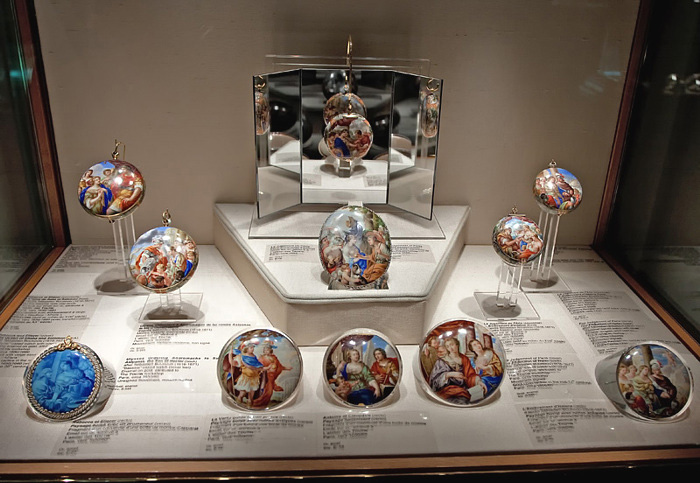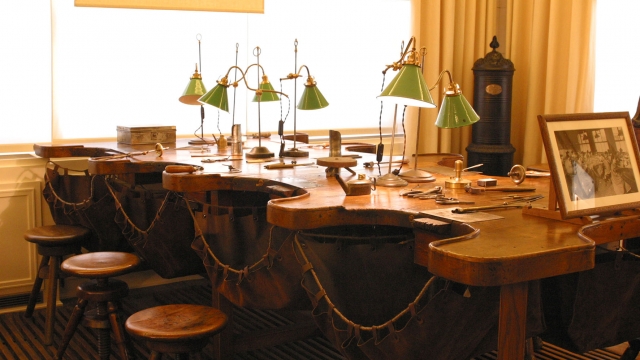 |
| Only in Geneva would there be a Rolex store next to a McDonald's |
With a random weekend in Geneva, I wanted to get lost in time. The one main thing that is left on my list to explore is the famous Patek Philippe Museum. Just as the Swiss are famous for their precision (in all aspects of life), Geneva is world renowned for its watches. Advertisements with famous celebrities line the hallways and terminals of the Geneva airport, and more watch advertisements hang from lampposts in the city. Swiss watch-making is so well-known that references fill rap songs on American radio channels (although for whatever reason, the brand of choice circa 2013/2014 seems to be Audemars Pigeut).
Despite Patek Philippe being founded as a company in the mid-1800s, I had previously not heard of it. Of course, with the myriad of watchmaking advertisements around Geneva, it was not long until I came upon advertisements as finely crafted as their watches. With the museum merely a few short blocks away from where I was staying in Plainpalais, I needed to check out this museum.
The private collection at the Patek Philippe Museum is absolutely incredible. The watches date all the way back to the 1500s, and the collection spans famous pieces of the highest craftsmanship of not only Patek Philippe, but many other famous Geneva watchmakers spanning the centuries. Because the museum is a private collection, no photographs are allowed, so all of the pictures I am posting here are found from other online sources.
 One thing that was especially unique about the Museum is that for some of the more intricate pieces, video monitors were set up nearby that showed you how all of the inner mechanisms fit together. The level of precision necessary to create such pieces is astounding, especially when you consider that today, to make something this precise, we use computers and laser-guided cutting, not the human hand.
One thing that was especially unique about the Museum is that for some of the more intricate pieces, video monitors were set up nearby that showed you how all of the inner mechanisms fit together. The level of precision necessary to create such pieces is astounding, especially when you consider that today, to make something this precise, we use computers and laser-guided cutting, not the human hand.
There were several pieces that featured false birds singing. The mechanical birds would move their tails, wings, and beaks and a music box would play a tune synced to their movements. Some of the birds could even move back and forth on their perches. There was even an ornamental mechanical pistol that, when the trigger was pulled, would shoot out a mechanical singing bird from the gun's barrel.
My favorite collection of watches were the musical and automata watches from the period ranging from 1770 to 1850. Of these watches, there was a pocket watch from 1815/1820 featuring an automaton of Moses in the desert striking his staff against the rock. Inside the watch, the "rock" is a two-sided tile where one side features material made to match the plain rock, and the other side is a tiny spiral of blue glass. On the hour, or when triggered, Moses strikes the rock and the water flows. I thought the way the watch was crafted was so clever and effective - truly striking.
The collection truly spanned the ages, beginning with watches from the 1500s and ending with recently made Patek Philippe watches. It was fascinating to see the development from the old pocket watches that the company made 150 years ago, to the art deco-inspired watches of the 1920s, the mid-century styled 1950s watches, and the current styles crafted and available for sale in stores around Geneva.
Some of my favorite watches were the enameled watches, from 1630 to 1730. The miniature painting on enamel emerged first in France around 1630. The new process quickly rose to such a level of perfection that, according to the Patek Philippe Museum's website, the artform reached its peak in less than 20 years. Enameled watches, like other things in Geneva around this time period were also linked to the Protestant Reformation, as the Museum explains:
The private collection at the Patek Philippe Museum is absolutely incredible. The watches date all the way back to the 1500s, and the collection spans famous pieces of the highest craftsmanship of not only Patek Philippe, but many other famous Geneva watchmakers spanning the centuries. Because the museum is a private collection, no photographs are allowed, so all of the pictures I am posting here are found from other online sources.

There were several pieces that featured false birds singing. The mechanical birds would move their tails, wings, and beaks and a music box would play a tune synced to their movements. Some of the birds could even move back and forth on their perches. There was even an ornamental mechanical pistol that, when the trigger was pulled, would shoot out a mechanical singing bird from the gun's barrel.
My favorite collection of watches were the musical and automata watches from the period ranging from 1770 to 1850. Of these watches, there was a pocket watch from 1815/1820 featuring an automaton of Moses in the desert striking his staff against the rock. Inside the watch, the "rock" is a two-sided tile where one side features material made to match the plain rock, and the other side is a tiny spiral of blue glass. On the hour, or when triggered, Moses strikes the rock and the water flows. I thought the way the watch was crafted was so clever and effective - truly striking.
 |
| Moses Automaton Watch, 1815 |
 |
| Astronomical Tidal Indication Watch, showing date, month, duration, phases/ages of the moon, and given hour of high tide. London, 1665 |
The technique begins with coating a metal surface, usually gold, with a base of white enamel. The paints, composed of finely ground enamel pigments of various colours, blended with a few drops of oil of lavender, are then applied to the enamelled surface and subjected to successive firings, which crystallise the colours and make them permanent. The brilliance and variety of the tints that glowed from the miniature portraits soon made every crowned head in Europe want these alchemists in his or her entourage. As this was a time of large Fairs and cultural exchange, there were many craftsmen roaming Europe, seeking new ideas and foreign clients. These unusual nomads rapidly became spokesmen for the principles of the Reformation. When people travel, so do ideas, and the guilds played a major role in the growth and spread of the Protestant faith. Indeed, craftsmen were amongst the first to become High Protestant. In 1685, with the Revocation of the Edict of Nantes by Louis XIV, the enameller’s trade, by now exclusively Protestant, was literally banished from France. Many Huguenot craftsmen thus fled to Geneva, the ideal haven for enamelling, which is so closely linked to watchmaking. From that moment on, Geneva became the cradle of painting on enamel in Europe.Some of my favorite enameled watches feature the bright pigments famous to the craft. The museum has several other amazing pieces, and is absolutely worth the visit.



 10:30 PM
10:30 PM
 J-Mad
J-Mad












 Posted in:
Posted in: 

0 comments:
Post a Comment